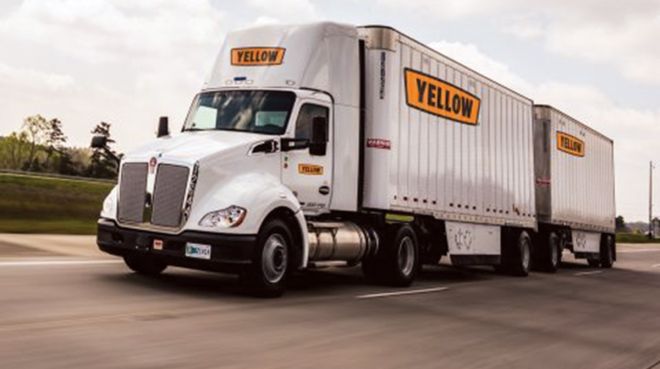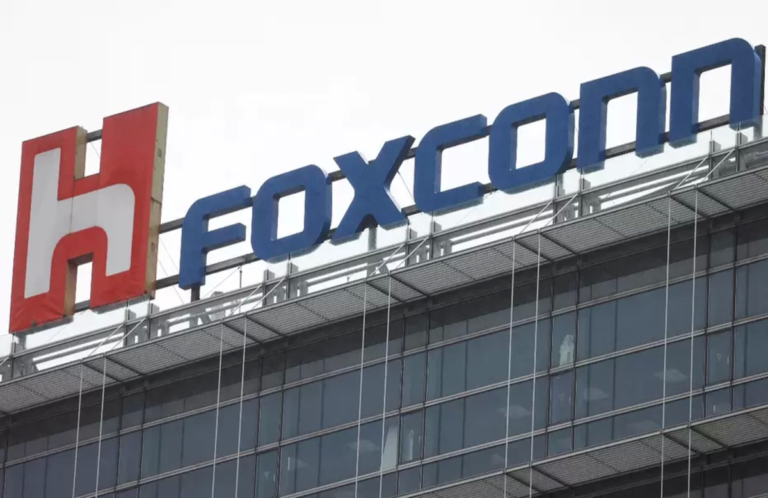The 99-year-old trucking company Yellow goes out of business, putting 30,000 people out of work
Yellow Corp., a trucking company that has been in business for 99 years and was once the best in its field, stopped running on Sunday and will let all of its 30,000 employees go.
The organized company and the Teamsters union, which covers about 22,000 drivers and dock workers at the company, have been fighting. Just last week, the union called off a strike that had been planned because the company wasn’t paying into its health insurance and pension plans. The union gave the company one more month to make the funds that were due.
But by the middle of the week last week, the company had stopped taking up freight from its customers and was only delivering freight that was already in its system, both the union and a trucking industry expert named Satish Jindel said.
The union decided not to go on strike against Yellow, but a letter sent to local unions on Thursday by the Teamsters’ negotiating committee said that the union and the trucking company could not agree on a new contract. Early on Monday, the union said it had been told about the shutdown.
“The news today is bad, but it’s not a surprise. Yellow has shown in the past that it couldn’t run itself, even though workers gave up billions of dollars and the federal government gave it hundreds of millions to help. In a statement, Teamsters President Sean O’Brien said, “This is a sad day for workers and the American freight industry.”
Sunday and Monday, many people asked company officials for comments, but they didn’t answer.
Even though the company is based in Nashville, Tennessee, it has terminals and workers all over the country. There are more than 300 of these computers. Experts in the field said that Yellow went out of business mostly because it had too much debt, more than the cost of the union deal.
“The Teamsters had made a series of painful concessions that brought them close to wage parity with nonunion carriers,” said Tom Nightingale, CEO of AFS Logistics, a third-party logistics company that places about $11 billion worth of freight with different trucking companies every year on behalf of shippers. He said that the company started taking on a lot of debt 20 years ago so it could buy other trucking businesses.
“Their debt service is so big now,” he said, referring to the company’s $1.5 billion in debt.
ABF Freight and TForce are also unionized and compete with Yellow in the same part of the shipping business as Yellow. In the past few years, both were much more successful than Yellow, which only made a small running profit in 2021 and 2022 and lost $9.3 million in the first quarter.
Last week, there were rumors that the company would file for bankruptcy on July 31. However, the company said last week that it was still in talks with the Teamsters and was looking at all of its options. On Monday, the Teamsters said the company is going bankrupt.
US People will Have to Pay More
Yellow’s shutdown is bad news not only for its workers and customers, who usually used it because it had some of the lowest prices in the trucking industry, but also for US taxpayers. In 2020, the federal government gave the company a $700 million loan. Because of this loan, taxpayers now own 30% of the company’s stock. In its most recent quarterly report, the company said it still owed the Treasury Department more than $700 million. This was almost half of the long-term debt it had on its books.
After hearing about the bankruptcy plans, Yellow’s stock lost 82% of its value between the time of that loan and Thursday’s close, when it was only worth 57 cents a share. It went up 14 cents a share on Friday, but it is still considered a “penny stock.”
The company got that loan during the pandemic, even though at the time it was accused of stealing money from the government by overcharging for packages of things for the US military. The disagreement was finally resolved, but the company had to pay a $6.85 million fine and didn’t have to say it did anything wrong.
Less-than-truckload, or LTL, is a part of the trucking business that Yellow works in. They move pallet-sized shipments of freight from different companies on the same truck. Up until June, the company said that it was the third biggest LTL carrier in the country.
Jindel said that the company only took care of about 7% of the 720,000 LTL packages made every day in the U.S. He said that the LTL market has about 8% to 10% of extra capacity right now, so the closing of Yellow shouldn’t cause too much trouble in the supply lines. But he said that shippers who use LTL carriers will have to pay more because it was the extra capacity that made prices go down.
Jindel said that users of Yellow will have to pay more.
He said that they were using Yellow because they were cheap. “They are learning that price was less than what it costs to run a good business.”
Even though the US economy has been strong, people have been spending less on goods and more on services like plane tickets and other experiences that don’t need to be moved by truck in recent years. In 2020 and early 2021, people were still stuck at home because of the pandemic. Nightingale said that LTL sales dropped 17% from 2021 to 2022 and another 5% in the first quarter of 2022 compared to the same time last year.
He said that Yellow could make money when there was a lot of demand for trucking, but that it couldn’t make it when freight slowed down and trucking rates dropped. When compared to the same time last year, Yellow’s sales dropped 13% in the first quarter, which made shippers worry about the company’s future.
Nightingale said, “That’s what Warren Buffett says: when the tide goes out, you find out who’s been swimming naked.”
The End of an Age for Trucks
When the trucking industry was deregulated almost 40 years ago, non-union trucking companies quickly took over the truckload business, which is the part of the business that deals with full trucks of goods. For low-cost competitors to get into that part of the business, all they needed was a truck.
But LTL needs a network of ports to sort the freight that comes in and goes out. This made it harder for low-cost rivals to join the market, but it didn’t stop them. So organized carriers like Yellow stayed big even as non-union competitors grew.
In the end, non-union operators also took over the LTL market. By the beginning of this century, most of the remaining unionized LTL carriers, like Yellow and peers Roadway Express, New Penn, and Holland, had to join to stay in business.
Yellow, Roadway, and CF, or Consolidated Freightways, used to be called the “Big Three” of the trucking business. In 2002, CF went out of business. And now that Yellow Corp. has shut down, the last two of the Big Three are also out of business.







